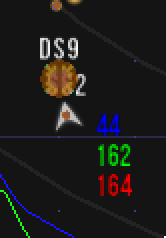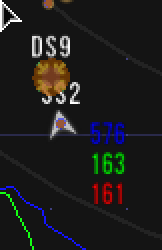Ooh! Good point. I do think we need to have a simple mode (which is the current mode) and the advanced mode, which pretty much does all of the above.
This also enables a bit more 'silent hunter' type of play, where you try to be as invisible as possible (flying slower, disabling certain systems, etc).
I also think that adding stuff like probes is an excellent way of doing more with sensors.


This is an idea from playing too much Allegiance and UFO Afterlight, and from working with real radar&lidar systems.
The sensors system is quite naïve: a spaceObject is either seen or not seen, and "sensors" is just one monolithic system. In real life, targets are acquired by aggregating input from several sensor systems: radar, lidar, AIS, FoF, cameras, and what-have-you.
Also, some objects (e.g. planets, stations) are more difficult to detect than others (fighter ships). This is the sensor fingerprint.
I don't want to reinvent the Science UI but rather set foundations for this.
So every space object should have several attributes:
If we want to go crazy, radiance and reflectivity can be split into several parts of the EM spectrum: microwave, visible and x-ray.
I just want my science officer to yell "Contacts in the gravimetric sensor, activating microwave emitters!" :-)